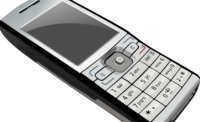Cell phones are not cure-alls
Man-down technology offers automatic SOS signals

Creating a safe working environment for employees goes beyond training these days, relying on technology to fill in the gaps where human instinct might fail. Technology has already made an impact on worker safety and is likely a factor in reducing workplace injuries and illnesses from 10.9 incidents per 100 workers in 1972 to 3.0 per 100 in 2015, and deaths from about 38 worker deaths a day in 1970 to 13 a day in 2015, according to OSHA.
But as far as businesses have come in the last 40 years in regards to safety, more can still be done.
Limitations
While proper training in safety procedures is crucial, so is ensuring that workers are equipped with the right tools to communicate effectively in an emergency situation to mitigate negative outcomes. According to the Pew Research Center, approximately 95 percent of Americans now own a cell phone of some type and more than one-third own a smartphone. While these devices provide many conveniences, in emergency situations they remain highly limited, especially in workplaces that do not allow personal phones on job or that have poor reception due to building structures.
For example, a cell phone is not able to detect if someone slipped on a spill, caught a limb in a piece of machinery or experienced one of the thousands of other emergencies that can occur on the job. With a cell phone the user is still required to be conscious and within range of the phone to be able to make a call for help. In the case of mobile workers and lone workers, cell phones are not the most reliable or function-rich options for tracking and monitoring employee safety and health. Additionally, in the case where a lone worker is confronted by a hostile third party, the cell phone is the first item often taken so as to prevent a call for help.
Emergency communication
A better solution than relying on cell phones for emergency communication are easily worn devices (i.e., wearables or wearable devices) that automatically report changes that could indicate an emergency. Or a device that a worker could easily utilize to express the need for help without having to speak or make much of a movement.
Fueled greatly by consumers’ rapidly adopting fitness trackers and smart watches, the global wearables market is expected to reach a value of $19 billion in 2018. But businesses can also have great impact on this evolving space. Already there are products like smart hard harts, smart safety vests, smart eyewear and even stick-on patches that can monitor everything from an employee’s location to body temperature and positioning. These devices eliminate the need for a worker to proactively report an emergency, but like cell phones they have their limitations as well.
No direct line of communication
For example, while the devices are able to transmit certain information about a situation to a manager or human resources department, they do not create a direct line of communication between the worker and responder. If verbal communication is possible in the emergency situation, the worker would still need to place a call on a phone.
A better option would be mPERS devices similar to those used by seniors for years. Essentially, a help button that can be pressed after a fall to alert emergency responders that assistance is needed. These types of technologies have become more beneficial because they no longer require a base station device to place calls, limiting their range of use.
Automatic alerts
Like other wearables, mPERS devices are small and lightweight. They provide state-of-the-art location technologies, and also offer built-in fall advisory capabilities. Wearables with this type of functionality are able to detect horizontal and vertical movement. But they take safety a step further than simply reporting a fall on the job via a text message or red flag in a software system. mPERS devices can also eliminate the need for the worker to initiate a call for help. Instead, they can trigger one automatically. And cloud-based technologies make it possible for central stations to immediately respond to the call for help.
Another benefit of mPERS devices over cell phones is long battery life. Unlike phones that sometimes have to be charged multiple times a day, mPERS devices have fewer functions and do not need to be fully functional at all times. They can be left off or essentially in a hibernation mode until the SOS button on the device is pressed. Once this action occurs, location information can be sent to a central reporting destination and an emergency call can be placed. This enables mPERS devices to have battery lives of up to 30 days on one charge.
Whatever wearable device makes the most sense for a particular company, the most important factor is that business owners and managers take advantage of these new technologies that can save lives and improve the safety and health of their employees.
Looking for a reprint of this article?
From high-res PDFs to custom plaques, order your copy today!





